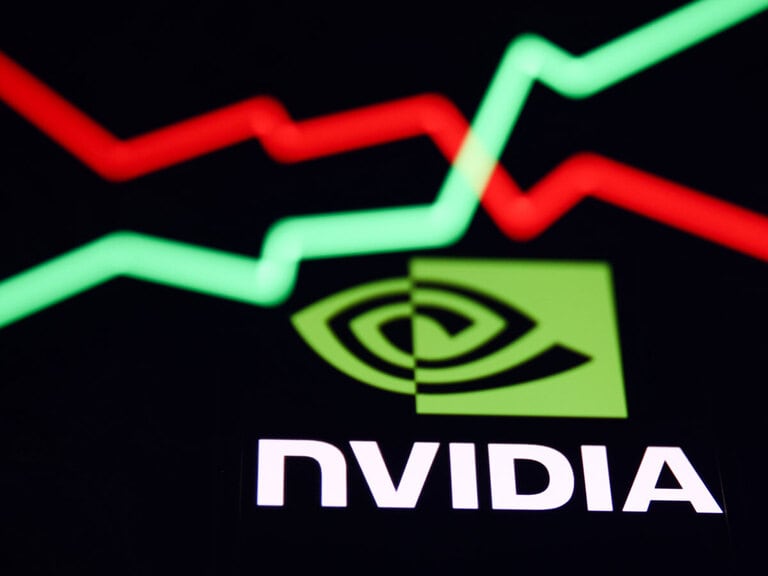The US is set to publish first-quarter gross domestic product data on Thursday. Consensus estimates suggest that the country’s economy expanded 2.0% on an annualised basis in the first three months of the year, easing a notch from 2.6% in Q4. Other macroeconomic stories to look out for this week include the Bank of Japan’s interest rate meeting and Germany’s Q1 GDP report, both on Friday. It’s also a big week for UK banks and US tech stocks, with Barclays, NatWest, Microsoft, Alphabet, Meta Platforms and Amazon all lining up to announce their latest results.
Our top three economic and company events in order of importance are:
1. US Q1 GDP – Thursday
After US consumer spending recovered in January with retail sales up 3.2% month-on-month, the shine has come off a little. On a monthly basis, retail sales declined 0.2% in February and sank a further 1% in March. Falling retail sales and turmoil in the banking sector are likely to have weighed on economic output to some extent during Q1, although the full impact may not become apparent until we get the revised second and third estimates of GDP. On the plus side, a strong labour market and earnings growth during the quarter are likely to underpin a strong consumer spending component of GDP.
Economists expect that US GDP grew at an annualised rate of 2% in Q1, slowing from 2.6% in Q4. Consumer spending is expected to have rebounded from Q4’s 1% increase.
2. Bank of Japan interest rate decision – Friday
With the Japanese yen weakening against the US dollar, the Bank of Japan’s first meeting with new governor Kazuo Ueda at the helm is sure to attract attention. The key question is whether Ueda will lay the groundwork for a possible tweak to the central bank's yield curve control.
Speaking earlier this month, Ueda was careful not to deviate too much from the path set by his predecessor, Haruhiko Kuroda. At his first press conference after officially taking charge on 9 April, Ueda stuck to the script as he said the existing policy remained appropriate under current economic conditions.
With core consumer price growth in Japan running at a 40-year high of 3.8%, a shift in policy may be imminent, possibly arriving by the end of Q2. That said, the headline rate of inflation slowed from 4.3% in January to 3.2% in March, potentially reassuring dovish policymakers who may be concerned by the resilience of core prices.
3. Microsoft Q3 results – Tuesday
Microsoft’s second-quarter results were largely positive, despite some weak areas. Downbeat guidance initially put the shares under pressure as investors realised that the next few quarters are likely to be challenging. However, after a few days the share price began to pick up. Since Microsoft published its Q2 results on 24 January, its shares have risen 18.7% to levels just below last August’s high.
Revenue in Q2, covering the three months to the end of December, came in at $52.7bn, up 2% from the year-ago period, as cloud computing revenue rose 22% to $27.1bn. However, net income fell to $16.43bn from $18.77bn a year earlier, partly due to a $1.2bn charge for severance costs as Microsoft cut 10,000 jobs. Personal computing revenue fell 19% to $14.2bn, while OEM (original equipment manufacturer) revenue decreased 39%.
Microsoft, the second biggest US company by market cap after Apple, said the next few quarters could bring a further slowdown in growth. Even strong areas of the business, such as its cloud computing platform Azure, could face headwinds, the company said. Microsoft also said that existing customers were asking for discounts, and added that subscription services were likely to slow.
The company projected that revenue would remain flat in Q3 at between $50.5bn and $51.5bn. Strength in Azure would help offset continued weakness in personal computing, with revenue there expected to be around $12bn, according to the company. The upcoming Q3 earnings call may shed more light on Microsoft’s stalled bid for video game publisher Activision Blizzard. Profit in Q3 is expected to come in at $2.23 a share.
More key events
Our calendar of selected upcoming economic and company announcements:
MONDAY 24 APRIL
No major scheduled events
TUESDAY 25 APRIL
Associated British Foods half-year results
ABF shares have made strong gains since sinking to a 10-year low in October last year, pushing to a one-year high back in February. The rebound in the share price was long overdue, but the shares still remain below pre-pandemic levels. The retail sector has faced challenges over the past three years but ABF’s diverse business model has seen the company post decent numbers across all of its businesses.
In February the owner of Primark and grocery brands such as Twinings and Ryvita upgraded its full-year outlook. As for the half-year results, adjusted operating profit and earnings are expected to be broadly in line with last year, despite higher costs. Total sales in the Primark business are expected to be 16% ahead of the same period last year, which was disrupted by the tail end of Omicron restrictions in the Netherlands and Austria. The operating profit margin is expected to be above 8%, compared to 11.7% in the first half of last year. UK sales are expected to have risen 15%, while European and US sales growth is expected to come in at 18% and 12%, respectively.
Alphabet Q1 results
When Google parent company Alphabet reported Q4 and full-year results on 2 February, the shares popped to their highest levels since September. Now, having slid in early March on the back of the wider stock market selloff, the shares are revisiting those February peaks. That said, at just under the $110 level they remain some way off their year-ago high of more than $130.
The main point of interest in the Q4 numbers was advertising and YouTube revenues, which have come under pressure in recent months as advertisers have cut their budgets. Revenue in Q4 came in at $76.05bn, slightly below expectations of $76.5bn, with net income falling to $13.6bn, or $10.05 a share. The main drag was in advertising, with YouTube ad revenue coming in light at $7.96bn, down from $8.6bn a year ago, while advertising revenue came in at just over $59bn, also down from last year. The cloud business improved on last year, with revenue here rising to $7.3bn.
Investors may be hoping that the glitches that affected the release of Bard, Google’s AI chatbot, are close to being resolved. The Q1 results are also set to show a charge of up to $2.3bn for severance costs after the company laid off 12,000 employees during the quarter. Profit for Q1 is expected to come in at $1.10 a share.
Microsoft Q3 results
See our top three events, above
WEDNESDAY 26 APRIL
Meta Platforms Q1 results
Shares of Facebook and WhatsApp owner Meta surged more than 20% on 2 February after the company posted better-than-expected Q4 revenue of $32.17bn and a profit of $1.76 a share. The company also announced a $40bn share buyback scheme. Meta forecast Q1 revenue of between $26bn and $28.5bn, which was in line with expectations.
Although Meta shares are up almost 70% year to date, outperforming rival tech stocks, the shares sank more than 70% last year from the record highs of $384 in September 2021.
Facebook active daily users increased to two billion a day in December, beating forecasts. The Reality Labs business continued to haemorrhage cash in Q4, running up an operating loss of $4.28bn, greater than the predicted loss of $3.99bn. Revenue from the segment did increase, though, coming in at $727m.
In March Meta said it was looking to cut thousands more jobs on top of the 11,000 layoffs it announced at the end of 2022. That could see costs rise in the short term. Profit in Q1 is expected to come in at $1.99 a share.
THURSDAY 27 APRIL
US Q1 GDP
See our top three events, above
J Sainsbury full-year results
Sainsbury’s shares have been on a decent run since hitting a record low in October. The gains have in part been fuelled by investment from the owner of the Costcutter chain Bestway Group, which bought a 3.45% stake in Sainsbury’s in January. While this helped push the J Sainsbury share price to its highest levels in over a year, the obstacles to a takeover bid remain high. Bestway would need to convince two other major shareholders, the Qatar Investment Authority and Daniel Kretinsky’s Vesa Investment fund, that it has a credible plan to take the business forward. One upside is that Bestway’s wholesale business could offer synergies for Sainsbury’s moving forward.
Sainsbury’s had a solid Q3. Just after Christmas the supermarket chain reported Q3 retail sales growth of 5.2% year-on-year, with grocery sales up 5.6%. Like-for-like sales were up 5.9% on the year-ago period, with Argos’ sales up 4.5% as shoppers eschewed the flakiness of a strike-ridden Royal Mail. Christmas grocery sales increased 7.1%. Guidance for full-year underlying profit before tax was kept unchanged at the upper end of the target range of £630m to £690m, despite the twin headwinds of price and margin pressures.
At the end of March, Sainsbury’s 12-week sales were up 6.9% according to data published by Kantar. While that put the chain behind Aldi and Lidl, it compared favourably to other supermarkets.
Barclays Q1 results
In March Barclays shares briefly hit their lowest levels in over two years amid turmoil in the banking sector. Away from the market jitters, Barclays’ Q4 and full-year numbers had already started to weigh on this year’s share price gains. After a first-half loss stemming from the over-issuance of debt securities, revenue and pre-tax profit in Q4 came in short of expectations.
Attributable profit in Q4 came in at £1bn, lifting full-year group attributable profit to £5bn. The corporate and investment bank saw revenue decline 2% to £2.57bn, with a disappointing performance across the board. Operating expenses over the year came in as expected at £16.7bn, up from £14.7bn in 2021, with £1.6bn of the total related to litigation and conduct charges. Credit impairment charges were £1.2bn, with another £700m set aside in Q4. The dividend was increased to 7.25p from 6p, with the bank pledging to buy back £500m of its shares.
Although CEO C.S. Venkatakrishnan expressed caution over global economic conditions, he remained optimistic about the bank’s outlook. Nonetheless, the turbulence in March is likely to have weakened the Q1 performance of its international bank, which was already struggling to generate a decent return on equity.
Amazon Q1 results
Having cut its guidance on Q4 revenue to between $140bn to $148bn, Amazon surprised the market by posting Q4 revenue of $149.2bn. Profit for the quarter came in at $300m, or $0.03 a share. This was a welcome but unexpected bonus for investors, who had been primed to expect another quarterly loss due to a further $2.3bn write-down on Amazon’s stake in the electric automaker Rivian.
Revenue from Amazon Web Services was slightly weaker than expected at $21.3bn in Q4, though that still represented annual growth of 20%. For the full year, Amazon posted $514bn in net sales, up from $496.8bn in 2021. However, the company incurred a net annual loss of $2.7bn, compared to a $33.4bn profit in 2021, after the Rivian write-down wiped $12.7bn off company profits.
In an attempt to control cash flow, Amazon is slowing its capex expenditure and pausing construction of its second HQ in Virginia. For Q1, Amazon guided net sales of between $121bn and $126bn, versus analyst forecasts of $125.5bn. Profit in Q1 is expected to come in at $0.20 a share.
FRIDAY 28 APRIL
Bank of Japan interest rate decision
See our top three events, above
Germany Q1 GDP
The German economy may have slid into recession in the first quarter. The upcoming Q1 GDP print will reveal whether economic output contracted for the second quarter in a row. Germany’s GDP shrank 0.4% in Q4.
There wasn’t much improvement in manufacturing PMIs over the quarter, despite lower energy prices. If anything, economic activity in the manufacturing sector appeared to dip, with the March PMI reading sliding to 44.7 – its lowest level since 2020. On the other hand, services sector activity offered some encouragement with three readings above 50 – indicating expansion – during the quarter. That said, retail sales in Germany declined 0.3% month-on-month in January and fell a further 1.3% month-on-month in February as high inflation led some consumers to tighten the purse strings.
NatWest Group Q1 results
When NatWest reported full-year results in February, its shares were trading close to their highest levels since May 2018 as concerns over a UK economic slowdown faded. The shares have retreated a touch since then, touching three-month lows in March, with some investors unsure whether last year’s share price gains can be repeated in 2023. The uncertainty around the European banking sector following the buyout of Credit Suisse didn’t help.
In Q4, NatWest’s profits rose to an impressive £1.26bn, a big increase on the £187m in Q3, taking full-year profits to £3.34bn, up from £2.95bn a year ago. Total impairments for the year rose to £337m which, given the uncertain outlook, comes across as sensible contingency planning. The higher interest rate environment lifted net interest margin (NIM) from 2.99% in Q3 to 3.2% in Q4, raising average NIM for the year to 2.85%, up from 2.30% a year ago.
The bank proposed a final dividend of 10p and outlined a share buyback programme of £800m for the first half of 2023. That increased financial year payments to shareholders to £5.1bn, or 53p per share. That’s good news for the UK government, which still holds a 48% stake in the bank.
NatWest issued a cautious outlook, saying it expects to generate full-year income of £14.8bn in 2023, and a full-year NIM of 3.2% based on a base rate of 4%. The current base rate is already above this at 4.25% and could well go up to 4.5% next month, potentially boosting NatWest’s NIM. Impairments are expected to remain in line with previous forecasts.
INDEX DIVIDEND SCHEDULE
Dividend payments from an index's constituent shares can affect your trading account. View this week's index dividend schedule.
SELECTED COMPANY RESULTS
| MONDAY 24 APRIL | RESULTS |
| Coca-Cola (US) | Q1 |
| Keystone Law (UK) | Full-year |
| TUESDAY 25 APRIL | RESULTS |
| Alphabet (US) | Q1 |
| Associated British Foods (UK) | Half-year |
| Card Factory (UK) | Full-year |
| Danaher (US) | Q1 |
| Dow (US) | Q1 |
| General Electric (US) | Q1 |
| General Motors (US) | Q1 |
| Kimberly-Clark (US) | Q1 |
| McDonald's (US) | Q1 |
| Microsoft (US) | Q3 |
| Moody's (US) | Q1 |
| NextEra Energy (US) | Q1 |
| PepsiCo (US) | Q1 |
| Petrofac (UK) | Full-year |
| Raytheon Technologies (US) | Q1 |
| United Parcel Service (US) | Q1 |
| Verizon Communications (US) | Q1 |
| Visa (US) | Q2 |
| Whitbread (UK) | Full-year |
| WEDNESDAY 26 APRIL | RESULTS |
| American Tower (US) | Q1 |
| Automatic Data Processing (US) | Q3 |
| Boeing (US) | Q1 |
| GSK (UK) | Q1 |
| Luxfer Holdings (US) | Q1 |
| Meta Platforms (US) | Q1 |
| Morningstar (US) | Q1 |
| Roku (US) | Q1 |
| ServiceNow (US) | Q1 |
| Standard Chartered (UK) | Q1 |
| Thermo Fisher Scientific (US) | Q1 |
| THURSDAY 27 APRIL | RESULTS |
| Amazon.com (US) | Q1 |
| AstraZeneca (UK) | Q1 |
| Barclays (UK) | Q1 |
| Bristol-Myers Squibb (US) | Q1 |
| Capricorn Energy (UK) | Full-year |
| Caterpillar (US) | Q1 |
| Cazoo Group (US) | Q1 |
| First Solar (US) | Q1 |
| Gilead Sciences (US) | Q1 |
| Harley-Davidson (US) | Q1 |
| Hershey (US) | Q1 |
| Hertz Global Holdings (US) | Q1 |
| Honeywell (US) | Q1 |
| Intel (US) | Q1 |
| J Sainsbury (UK) | Full-year |
| Mastercard (US) | Q1 |
| Mondelez (US) | Q1 |
| Pentair (US) | Q1 |
| S&P Global (US) | Q1 |
| Willis Towers Watson (US) | Q1 |
| FRIDAY 28 APRIL | RESULTS |
| Aon (US) | Q1 |
| James Fisher & Sons (UK) | Full-year |
| Lazard (US) | Q1 |
| NatWest Group (UK) | Q1 |
Note: While we check all dates carefully to ensure that they are correct at the time of writing, company announcements are subject to change.






